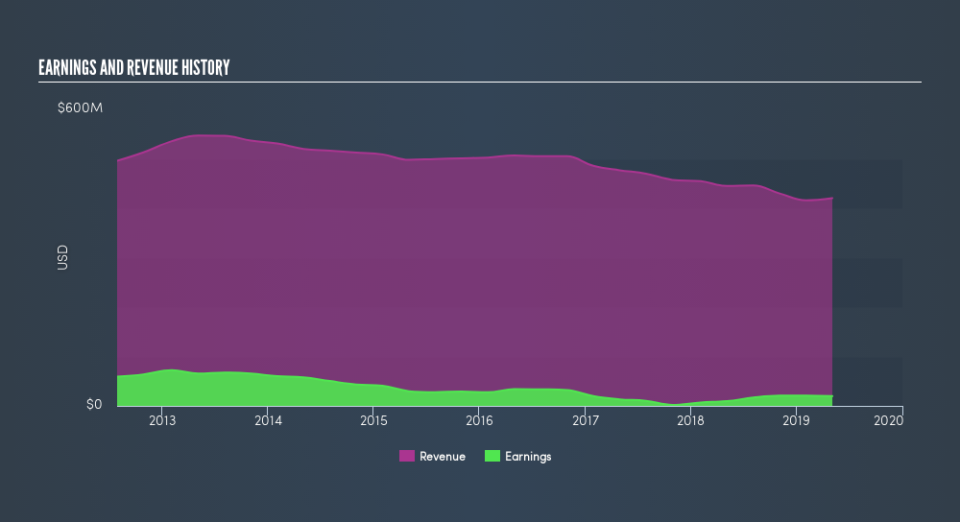What Kind Of Share Price Volatility Should You Expect For Vera Bradley, Inc. (NASDAQ:VRA)?

Want to participate in a short research study? Help shape the future of investing tools and you could win a $250 gift card!
If you own shares in Vera Bradley, Inc. (NASDAQ:VRA) then it's worth thinking about how it contributes to the volatility of your portfolio, overall. In finance, Beta is a measure of volatility. Volatility is considered to be a measure of risk in modern finance theory. Investors may think of volatility as falling into two main categories. The first type is company specific volatility. Investors use diversification across uncorrelated stocks to reduce this kind of price volatility across the portfolio. The second sort is caused by the natural volatility of markets, overall. For example, certain macroeconomic events will impact (virtually) all stocks on the market.
Some stocks see their prices move in concert with the market. Others tend towards stronger, gentler or unrelated price movements. Beta can be a useful tool to understand how much a stock is influenced by market risk (volatility). However, Warren Buffett said 'volatility is far from synonymous with risk' in his 2014 letter to investors. So, while useful, beta is not the only metric to consider. To use beta as an investor, you must first understand that the overall market has a beta of one. A stock with a beta greater than one is more sensitive to broader market movements than a stock with a beta of less than one.
View our latest analysis for Vera Bradley
What does VRA's beta value mean to investors?
Looking at the last five years, Vera Bradley has a beta of 0.85. The fact that this is well below 1 indicates that its share price movements haven't historically been very sensitive to overall market volatility. This means that -- if history is a guide -- buying the stock would reduce the impact of overall market volatility in many portfolios (depending on the beta of the portfolio, of course). Beta is worth considering, but it's also important to consider whether Vera Bradley is growing earnings and revenue. You can take a look for yourself, below.
Could VRA's size cause it to be more volatile?
Vera Bradley is a noticeably small company, with a market capitalisation of US$391m. Most companies this size are not always actively traded. Companies with market capitalisations around this size often show poor correlation with the broader market because market volatility is overshadowed by company specific events, or other factors. It's worth checking to see how often shares are traded, because very small companies with very low beta values are often only thinly traded.
What this means for you:
One potential advantage of owning low beta stocks like Vera Bradley is that your overall portfolio won't be too sensitive to overall market movements. However, this can be a blessing or a curse, depending on what's happening in the broader market. This article aims to educate investors about beta values, but it's well worth looking at important company-specific fundamentals such as Vera Bradley’s financial health and performance track record. I highly recommend you dive deeper by considering the following:
Future Outlook: What are well-informed industry analysts predicting for VRA’s future growth? Take a look at our free research report of analyst consensus for VRA’s outlook.
Past Track Record: Has VRA been consistently performing well irrespective of the ups and downs in the market? Go into more detail in the past performance analysis and take a look at the free visual representations of VRA's historicals for more clarity.
Other Interesting Stocks: It's worth checking to see how VRA measures up against other companies on valuation. You could start with this free list of prospective options.
We aim to bring you long-term focused research analysis driven by fundamental data. Note that our analysis may not factor in the latest price-sensitive company announcements or qualitative material.
If you spot an error that warrants correction, please contact the editor at editorial-team@simplywallst.com. This article by Simply Wall St is general in nature. It does not constitute a recommendation to buy or sell any stock, and does not take account of your objectives, or your financial situation. Simply Wall St has no position in the stocks mentioned. Thank you for reading.


